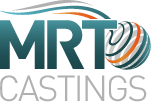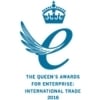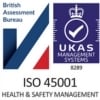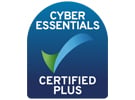Die casting is a manufacturing process used to produce metal components with high precision and dimensional accuracy. It involves injecting molten metal, under high pressure, into a reusable mould known as a ‘die’. Once the metal has solidified, the die halves are separated, and the component is ejected.
When creating a new part, OEMs need to choose the right manufacturing process for the project at hand (because of course, no process would be a ‘best fit’ for every circumstance). However, die casting is commonly used for components with complex geometries - such as those with thin walls, fine details, or undercuts. It’s also suitable for a wide range of metals and alloys - including ‘green metals’, like aluminium – which can lend itself well to the sustainability objectives of individual companies.
At MRT, we’re a dynamic team of die casting experts, taking our customers on a journey from design, straight through to manufacture. We’ll always endeavour to find the best process to fit your requirements and, to help you on your way, we’ve come up with three advantages of die casting that you should consider – before opting for an alternative method.
Superior Dimensional Accuracy and a Perfect Surface FinishOne of the primary advantages of die casting over other manufacturing processes (such as investment or centrifugal casting) is the ability to produce complex parts with excellent dimensional accuracy and surface finish.
As molten metal is injected into the mould cavity under high pressure, it fills every contour. This helps ensure the cast part replicates the mould’s design with the highest precision and consistent accuracy, even when producing parts in large quantities.
In comparison, other processes like sand or gravity casting just can’t achieve the same level of precision. With these other methods, there is a higher frequency of dimensional inaccuracy, shrinkage, and surface defects.
Moreover, die casting requires less post-production machining, as the parts are already near perfect when removed from the mould. This not only saves time and money, but also helps maintain that overall quality our customers demand.
Fast Production and High-Volume CapabilityDie casting can produce high volume at remarkable speeds. Once the setup is done, the process is automatic. Die casting machines can inject molten metal into the mould in just a few seconds depending on the complexity and size of the part. This is a real advantage over other casting, which requires much longer cycle times.
Furthermore, die casting moulds can cope brilliantly with extreme pressures and temperatures. This results in long mould life and the ability to produce tens, or even hundreds of thousands of parts before the mould needs replacing.
This is especially beneficial for industries requiring large quantities of identical parts, such as automotive and consumer electronics. In contrast, other processes like sand or gravity casting may need pattern or mould replacement more often, leading to increased production cost and longer lead times.
Material Versatility and Efficient Material UsageDie casting offers a wide range of material options. This makes it suitable for various industries and applications. Aluminium is often the most appropriate material for our projects at MRT, but there are options to use magnesium and zinc, too. Each has unique properties that can be tailored to specific needs, such as lightweight designs for automotive and aerospace applications or high strength and durability for machinery components.
In addition to material versatility, die casting is great for efficient material usage. As molten metal is injected under high pressure into the mould cavity, the process results in hardly any waste. Any excess material can be easily recycled.
This is in stark contrast to other processes, such as machining, which generates significant material waste in the form of swarf and chips. The extremely efficient material usage in die casting not only reduces production costs but also contributes to a more sustainable and environmentally friendly manufacturing process.
While there is still a place for other casting methods it’s easy to see why die casting is so popular. It’s cost-effective, fast, accurate, good for the environment.
Are you considering a die cast part for your next project?
Our experts at MRT can bring your vision to life.
Download our free guide: Notes for Designers of Non-Ferrous Castings
Or








